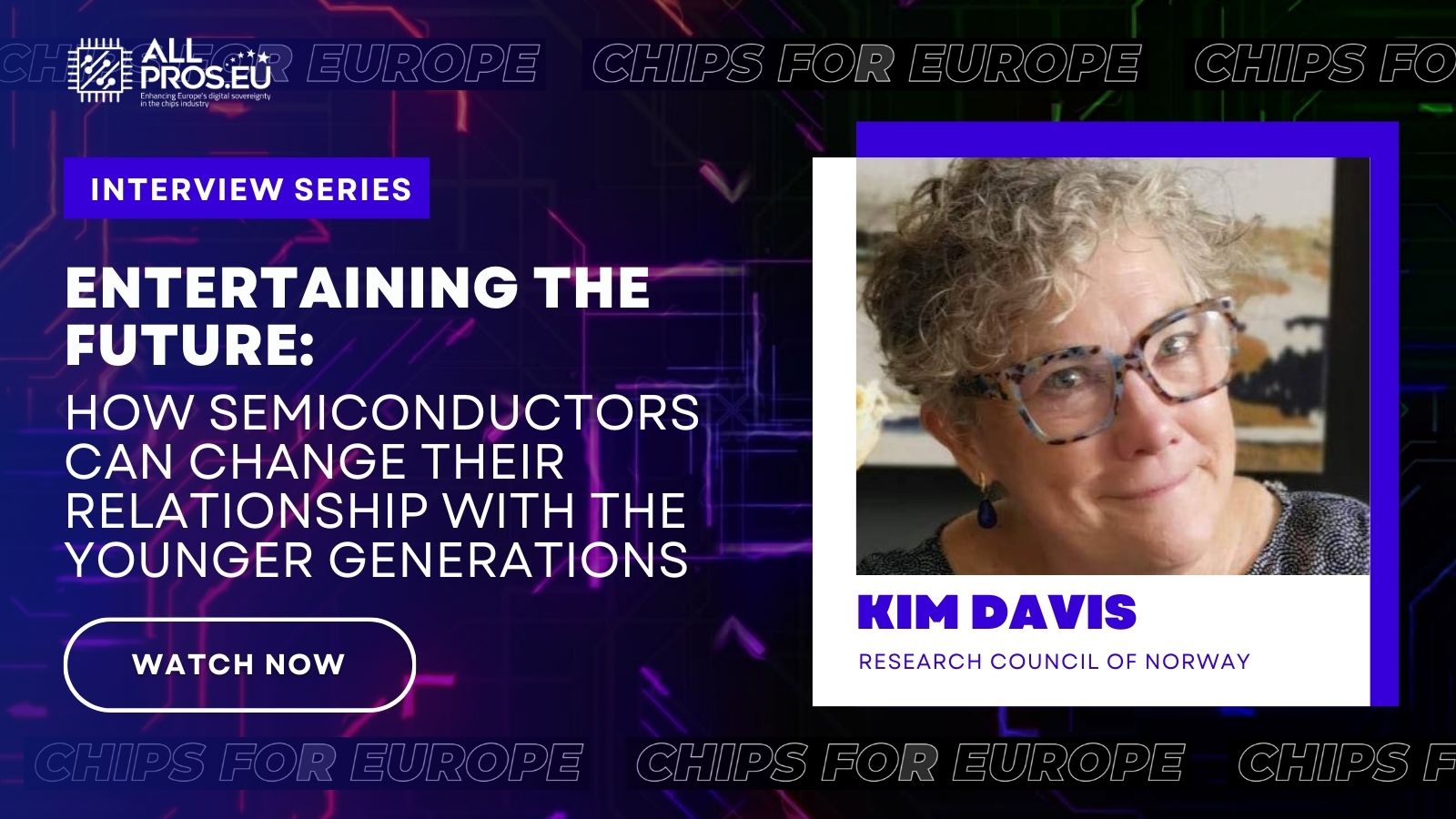
ALLPROS.eu Interview with Kim Davis, Research Council of Norway
Entertaining the future: how semiconductors can change their relationship with the younger generations
In our recent interview, we delved into a conversation with Kim Davis, a professional in the world of STEM with over 20 years of experience in the Research Council of Norway.
To start the interview, Ms. Davis highlighted three primary challenges confronting the semiconductor industry in Europe. Firstly, the immense demand for semiconductors across various industries, underlining their pivotal role in today's technological landscape. Secondly, the need for green and low-power solutions to align with sustainability goals, which implies considering the entire lifecycle of semiconductors, including recycling. Lastly, strategic prioritisation becomes crucial, raising questions about where to focus innovation efforts—whether on the automotive industry or public transportation, for example.
“Is the automobile industry the most important industry we have that uses semiconductors? Is a car in every garage an important thing for us? Or should we focus more on semiconductors for public transportation and urban mobility? [...] We need to decide where to set our focus.”
Addressing the expected impact of the Chips Act, Ms. Davis emphasised the significance of such an endeavour: the Act aims to unite efforts across Europe, creating a critical mass of decision-making power, which she views as essential when engaging with global players such as China and the United States. Indeed, low levels of European economic cohesion have often put the region at a disadvantage vis-à-vis the two major players.
When it comes to attracting talent to the semiconductor industry, Davis stressed the importance of thinking untraditionally. This involves looking beyond traditional academic routes and embracing on-the-job training, making the industry more accessible to a diverse range of individuals and increasing the pool of workers it can draw from.
“Also, as you get older, you all of a sudden realise that there are more possibilities than you thought when you were young. So give people an opportunity to train later! And to choose a different path, and also (provide) on-the-job training as opposed to traditional academic training.”
In a creative approach to incentivizing young people to enter the field, Davis proposed leveraging the entertainment industry. A compelling television series could bring excitement and intrigue to the semiconductor industry, capturing the interest of the younger generation, as well as increasing the sector’s visibility to the general public, something that it currently struggles with.
“People need stories, right? You illustrate things better that way. [...] So often, I think people are turned off by this sector, because they don't understand what it is. It's not something people talk about every day.”
Closing the interview, Davis called on listeners to consider joining the semiconductor industry, citing the diverse opportunities within the industry, spanning design to material technology to software engineering to environmental efficiency and highlighting the collective problem-solving efforts of everyone involved to build not just a better product and a better sector but to build a better, greener future.